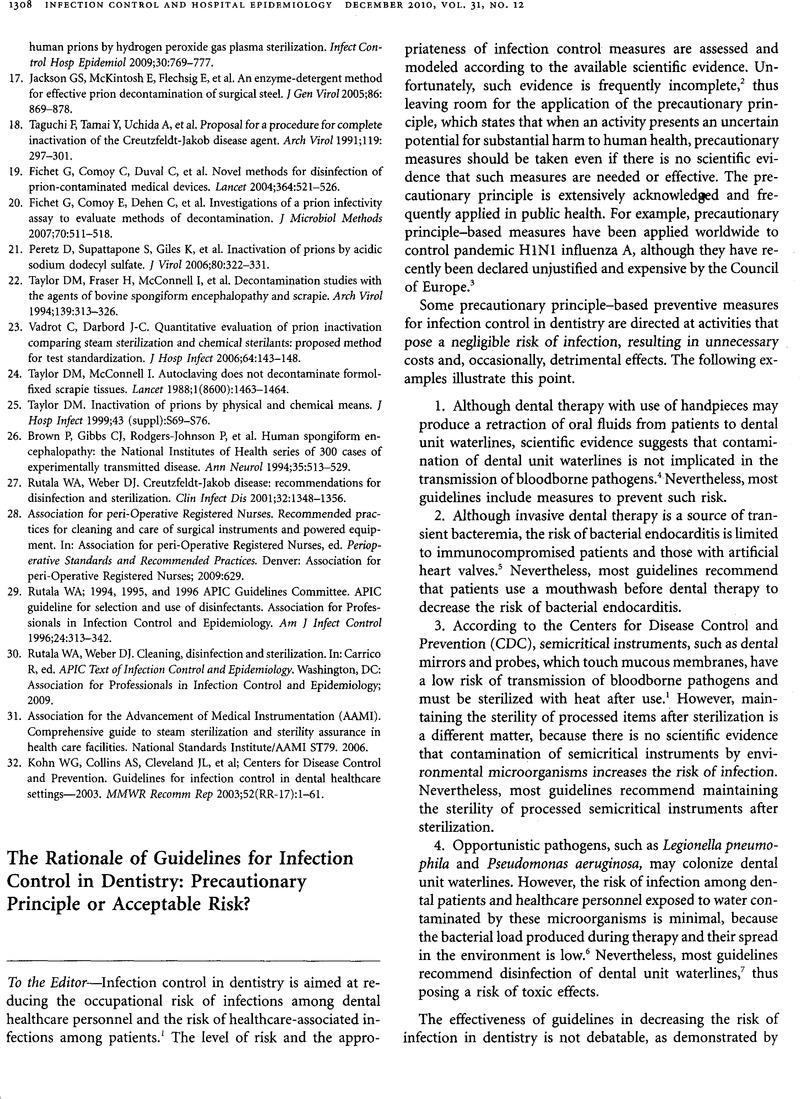Crossref Citations
This article has been cited by the following publications. This list is generated based on data provided by Crossref.
Petti, Stefano
and
Polimeni, Antonella
2011.
Risk of Methicillin-Resistant Staphylococcus aureus Transmission in the Dental Healthcare Setting: A Narrative Review.
Infection Control & Hospital Epidemiology,
Vol. 32,
Issue. 11,
p.
1109.
Petti, Stefano
Messano, Giuseppe A.
and
Polimeni, Antonella
2011.
Dentists’ awareness toward vaccine preventable diseases.
Vaccine,
Vol. 29,
Issue. 45,
p.
8108.
Petti, Stefano
De Giusti, Maria
Moroni, Catia
and
Polimeni, Antonella
2012.
Long-term survival curve of methicillin-resistant Staphylococcus aureus on clinical contact surfaces in natural-like conditions.
American Journal of Infection Control,
Vol. 40,
Issue. 10,
p.
1010.
Petti, Stefano
and
Polimeni, Antonella
2012.
Methicillin-resistant Staphylococcus aureus infection transmission in dental health care settings: Myths and facts.
American Journal of Infection Control,
Vol. 40,
Issue. 3,
p.
287.
Petti, Stefano
Moroni, Catia
Messano, Giuseppe Alessio
and
Polimeni, Antonella
2013.
Detection of Oral Streptococci in Dental Unit Water Lines After Therapy with Air Turbine Handpiece: Biological Fluid Retraction more Frequent than Expected.
Future Microbiology,
Vol. 8,
Issue. 3,
p.
413.
Petti, Stefano
Polimeni, Antonella
and
Dancer, Stephanie J.
2013.
Effect of disposable barriers, disinfection, and cleaning on controlling methicillin-resistant Staphylococcus aureus environmental contamination.
American Journal of Infection Control,
Vol. 41,
Issue. 9,
p.
836.
Vingolo, Enzo Maria
Messano, Giuseppe Alessio
Fragiotta, Serena
Spadea, Leopoldo
and
Petti, Stefano
2015.
Ocular Manifestations of Ebola Virus Disease: An Ophthalmologist’s Guide to Prevent Infection and Panic.
BioMed Research International,
Vol. 2015,
Issue. ,
p.
1.
Petti, Stefano
2016.
The Chicken–Egg Dilemma: Legionnaires’ Disease and Retrograde Contamination of Dental Unit Waterlines.
Infection Control & Hospital Epidemiology,
Vol. 37,
Issue. 10,
p.
1258.
Petti, Stefano
2016.
Tuberculosis: Occupational risk among dental healthcare workers and risk for infection among dental patients. A meta-narrative review.
Journal of Dentistry,
Vol. 49,
Issue. ,
p.
1.
Petti, Stefano
2016.
Healthcare Outbreaks Associated With Dental Unit Water Systems: Strong Scientific Evidence of Minimal Risk.
Clinical Infectious Diseases,
Vol. 63,
Issue. 9,
p.
1270.
Nardone, Michele
Cordone, Angelo
and
Petti, Stefano
2022.
Occupational COVID‐19 risk to dental staff working in a public dental unit in the outbreak epicenter.
Oral Diseases,
Vol. 28,
Issue. S1,
p.
878.



